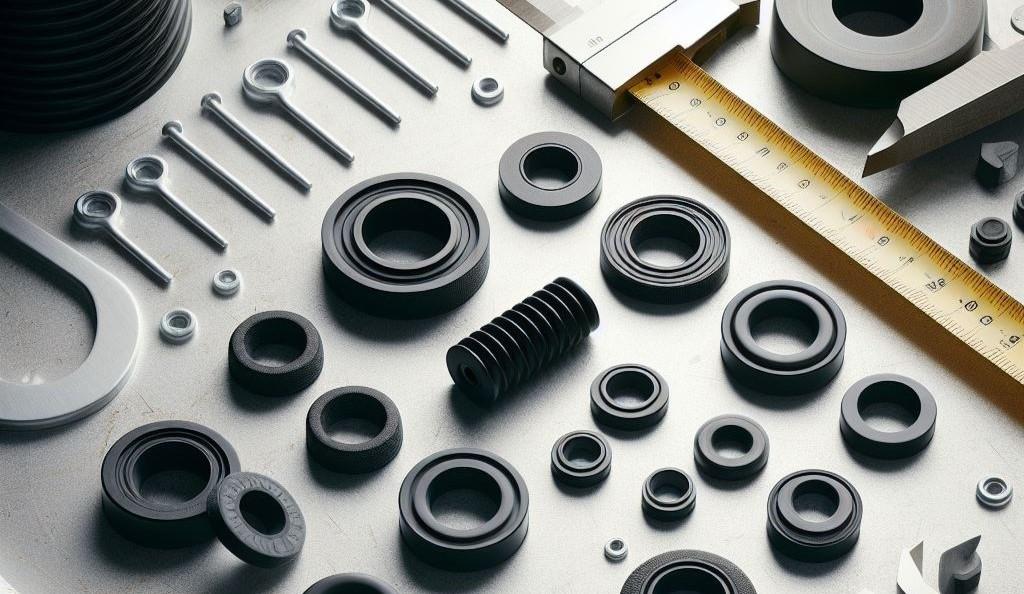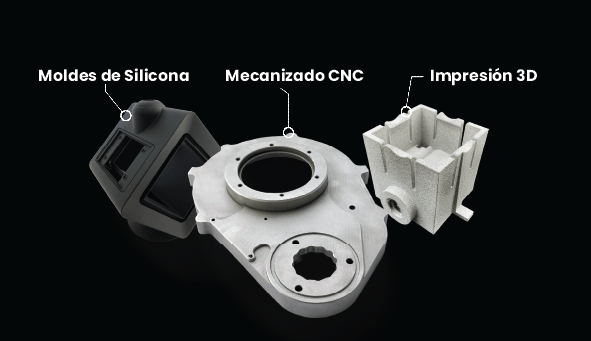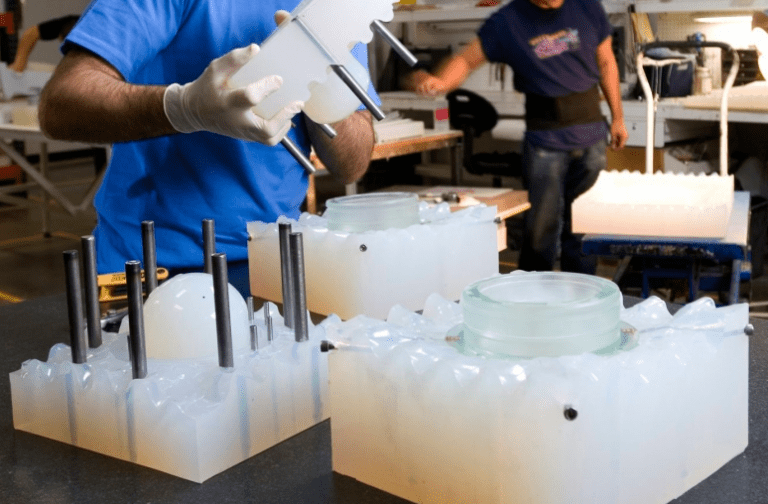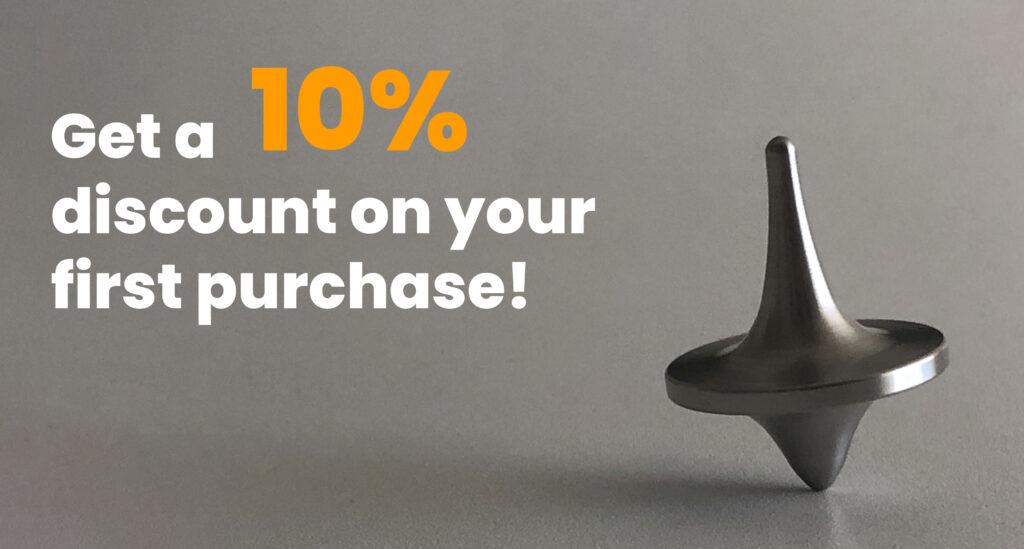. vacuum casting can also be referred to as polyurethane casting or urethane casting, since the casting material used is a polyurethane resin. This technology is an economical and fast option for the manufacture of plastic components. That is why vacuum casting of silicone molds has a huge number of uses and applications.
In this article we tell you about some of them along with the limitations that this technology may have.
Vacuum casting uses and applications
Vacuum casting is an efficient and cost-effective option for the manufacture of polyurethane parts in short series.
Some of the industries or sectors where this technology is used are:
- Part prototyping: resins and rubber materials are ideal for prototyping, as they allow rapid corrections to part designs and performance before committing to more expensive materials and tooling.
- The manufacture of consumer products: products such as sunglasses, pens and other stationery products or cosmetic packaging are manufactured efficiently and quickly by vacuum casting.
- The food industry: food and beverage packaging is also often manufactured using the vacuum casting process.
- Electronics industries: Polyurethanes have excellent shock and heat resistance, making it an ideal material for the manufacture of electronic device housings.
What are the limitations of vacuum casting silicone molds?
Vacuum casting is a process that works best for simpler part geometries with open passages for vacuum access. More complex internal details and some holes may be difficult to evacuate completely.
Therefore, we can say that there are cases in which other methods may be a better option. The SLA 3D printing process, for example, can provide greater flexibility and precision for parts with complex internal features.
On the other hand, CNC machining can also meet these types of characteristics from solid blocks of material, although it requires preformed raw material and greater material waste. It is also the most expensive option.
Another limitation of vacuum casting would be the high part volume restrictions, as it is a process that is intended for low volume production (typically between 1 and 50 parts). When the quantity exceeds this limit, the process becomes less efficient and more costly.
In addition, there is a high dependence on the master model. Great attention to detail is an essential factor in this technology, because if there is a defect or an error in the initial model, it will be reflected in all the parts.
In short, vacuum casting in silicone molds is an ideal process for the fast and economical manufacture of polyurethane parts, but it also has some limitations. Therefore, it is essential to take into account all the characteristics of a technology and a material in order to choose those that best suit the needs of the project.
For more information about silicone molds you can visit our website.
What are you wating for? Request your quote now!





